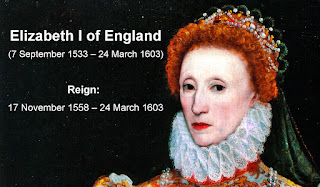Tuesday, April 4, 2023
First european settlers in Canada
European colonization of present-day Canada began as early as the 10th–11th century, when West Norse sailors explored and briefly settled limited areas on its eastern shores. The Norse, who had settled Greenland and Iceland, arrived around the year 1000 and built a small settlement at L'Anse aux Meadows, at the northernmost tip of Newfoundland. Carbon dating estimate this between 990 – 1050 Current Era. L'Anse aux Meadows is also notable for its connection with the attempted colony of Vinland established by Leif Erikson around the same period or, more broadly, with Norse exploration of the Americas.
According to Icelandic Sagas, violent conflicts with the indigenous population ultimately made the Norse abandon those settlements.
Under letters patent from King Henry VII of England, the Italian Giovanni Caboto (John Cabot) became the first European known to have landed in Canada after the time of the Vikings. Records indicate that on 24 June 1497 he sighted land at a northern location believed to be somewhere in the Atlantic provinces. Official tradition deemed the first landing site to be at Cape Bonavista, Newfoundland, although other locations are possible.
After 1497 Cabot and his son Sebastian Cabot continued to make other voyages to find the Northwest Passage, and other explorers continued to sail out of England to the New World, although the details of these voyages are not well recorded.
Based on the Treaty of Tordesillas, the Spanish Crown claimed it had territorial rights in the area visited by John Cabot in 1497 and 1498. However, Portuguese explorers like João Fernandes Lavrador would continue to visited the north Atlantic coast, which accounts for the appearance of "Labrador" on topographical maps of the period. In 1501 and 1502 the Corte-Real brothers explored Newfoundland or Terra Nova, and Labrador claiming these lands as part of the Portuguese Empire.
In 1506, King Manuel I of Portugal created taxes for the cod fisheries in Newfoundland waters. João Álvares Fagundes and Pêro de Barcelos established fishing outposts in Newfoundland and Nova Scotia around 1521. However, these were later abandoned, with the Portuguese colonizers focusing their efforts on South America.
French interest in the New World began with Francis I France, who in 1524 sponsored Giovanni da Verrazzano to navigate the region between Florida and Newfoundland in hopes of finding a route to the Pacific Ocean.
In 1534, Jacques Cartier planted a cross in the Gaspé Peninsula and claimed the land in the name of Francis the first. Earlier colonization attempts by Cartier at Charlesbourg-Royal in 1541, at Sable Island in 1598 by Marquis de La Roche-Mesgouez, and at Tadoussac, Quebec in 1600 by François Gravé Du Pont had failed. Despite these initial failures, French fishing fleets began to sail to the Atlantic coast and into the Saint Lawrence River, trading and making alliances with First Nations.
England has its own attempts to establish a permanent settlement in present-day Canada. The English, led by Humphrey Gilbert, had claimed St. John's, Newfoundland, in 1583 as the first North American English colony by royal prerogative of Queen Elizabeth I.
In the reign of King James I, the English established additional colonies in Cupids and Ferryland, Newfoundland, and soon after established the first successful permanent settlements of Virginia to the south.
In 1604, a North American fur trade monopoly was granted to Pierre Du Gua, Sieur de Mons. The fur trade became one of the main economic ventures in North America. Du Gua led his first colonization expedition to an island located near the mouth of the Saint Croix River.
Among his lieutenants was a geographer named Samuel de Champlain, who promptly carried out a major exploration of the northeastern coastline of what is now the United States. In the spring of 1605, under Samuel de Champlain, the new Saint Croix settlement was moved to Port Royal.
This was the France's first successful settlement in North America. Port-Royal served as the capital of Acadia until its destruction by British military forces in 1613. France relocated the settlement and capital 8 kilometers upstream and to the south bank of the Annapolis River, the site of the present-day town of Annapolis Royal.
On 3 July 1608 Champlain founded what is now Quebec City, probably the earliest permanent settlement in present-day Canada , which would become the capital of New France. Champlain, also called "The Father of New France", served as its administrator for the rest of his life.
















